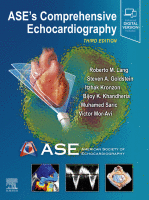Physical Address
304 North Cardinal St.
Dorchester Center, MA 02124

Aortic stenosis (AS) is the most common cardiac valve lesion in developed countries, including North America and Europe, with an incidence of 2% to 9% in patients older than 65 years of age. Moreover, the incidence is increasing as the…

Congenital Aortic Stenosis Bicuspid Aortic Valve Congenital aortic valve malformation reflects a phenotypic continuum of unicuspid valve (severe form), bicuspid valve (moderate form), tricuspid valve (normal, but may be abnormal), and the rare quadricuspid forms. Bicuspid aortic valves (BAVs) are…

Acknowledgment The authors acknowledge the contributions of Dr. Danita M. Yoerger Sanborn, who was the author of this chapter in the previous edition. Cor pulmonale refers to right ventricular (RV) hypertrophy and enlargement caused by disorders of the lung parenchyma…

This chapter reviews four of the most common familial neuromuscular diseases that have significant cardiac manifestations: Friedreich ataxia (FA), myotonic dystrophy (DM), Duchenne muscular dystrophy (DMD), and Becker muscle dystrophy (BMD). These syndromes vary significantly in their inheritance patterns, epidemiology,…

You’re Reading a Preview Become a Clinical Tree membership for Full access and enjoy Unlimited articles Become membership If you are a member. Log in here

Arrhythmogenic right ventricular cardiomyopathy (ARVC) is an inherited disorder causing fibrofatty replacement of the right ventricular myocardium. , This pathological change results in right ventricular (RV) dilatation and dysfunction, myocardial scarring, and risk of sudden cardiac death (SCD) caused by…

Acknowledgment The authors thank Dr. Karen Modesto for her contribution to the previous edition of this chapter. Constrictive pericarditis (CP) and restrictive cardiomyopathy (RCM) are both characterized by impairment of ventricular filling and manifest predominantly as so-called diastolic heart failure.…

Endomyocardial fibrosis (EMF) is a restrictive cardiomyopathy that was first described as an independent pathological entity in 1948 by John N.P. Davies of Makerere University in Uganda. At necropsy, he found a series of hearts that had dense scarring of…

Infiltrative cardiomyopathies (ICMOs) are a form of restrictive cardiomyopathy that may be caused by either hereditary or acquired diseases. They are characterized by the deposition of abnormal substances within the myocardium that cause stiffening of the left ventricular (LV) walls.…

Left ventricular noncompaction (LVNC) is characterized by the presence of prominent left ventricular (LV) trabeculae with adjacent deep intertrabecular recesses overlying a thin compacted layer of myocardium. There are several controversies relating to LVNC, including whether LVNC is a genetic…